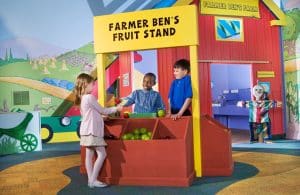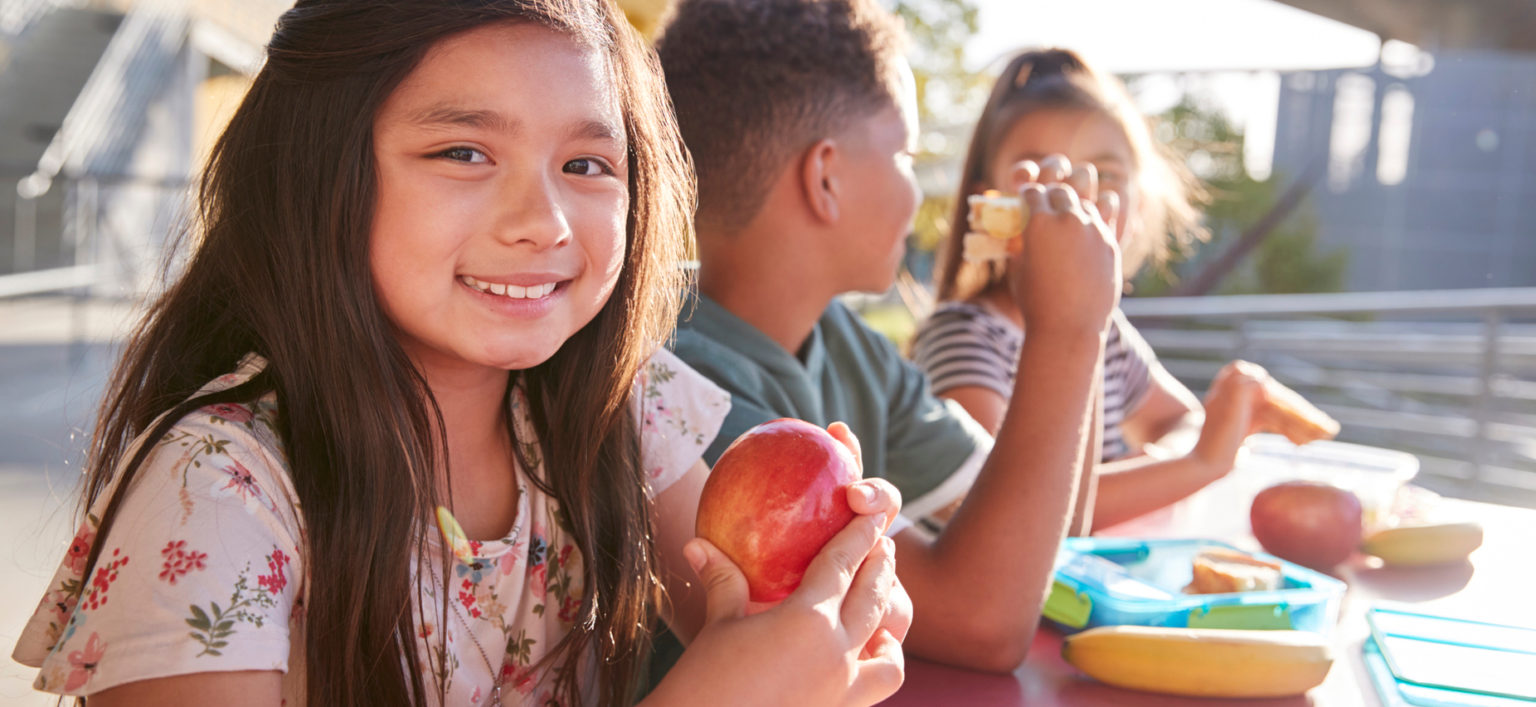When it comes to school lunch, deciding what to pack – or not to pack – or allow your child to buy – or not to buy – can quickly become a weekday dilemma. As a mom of two school-age boys and a registered dietitian, I can relate on many different levels.
I have had the privilege of working with school lunch programs, and providing a well-balanced meal with plenty of fruit, vegetables, protein, grains (mostly whole grains), and dairy that meets the budget, serving capabilities, and that children will actually eat is a gigantic challenge. Imagine your dinner has to please not just your family but hundreds of little ones every day – and also meet federally mandated nutrition guidelines.
Besides meeting nutrition guidelines, school meals must also offer a variety of foods every day, including fruits, vegetables, protein (meat or meat alternatives), dairy and grains. What’s more, legumes (such as black beans and chickpeas) must be offered every week!
The best tip I can share with families is if your children are buying lunch, review the school lunch menu with them and talk about what foods (also known as components) they are going to select. This will help you get a better understanding of what your child is eating and give you the chance to stress the value of eating more fruits, vegetables, and whole grains.
If you are packing your child’s lunch, here are the most important considerations: assembling 1) a nutritionally balanced meal, 2) that your child will eat (and have time to eat), and 3) that can be safely stored at the correct temperature to avoid food-borne illness.
When it comes to packing a nutritionally balanced lunch, I like to use a checklist, similar to the one school meal planners employ. Every day I aim to include grains (mostly whole grains), a meat or meat alternative, fruit, vegetable, and dairy:
Grains: whole wheat bread, whole wheat pasta, whole grain crackers, whole wheat pita bread.
Meat or meat alternative: roasted turkey breast, cheese, yogurt, peanut butter or other nut or seed butter, beans.
Fruit: applesauce, fruit strips (made with whole fruit), dried fruit, apple slices, bananas, fruit cups.
Vegetables: mini salad cups, baby carrots, sliced cucumbers, sliced peppers.
Dairy: milk (for example, a milk drink box), yogurt, cheese.
To make sure your child will eat it, engage him or her in the planning process of what to pack. Try narrowing down the selections for your children, like: Would you rather have an applesauce cup or a banana today in your lunch? Would you like baby carrots or cucumber slices?
As for packaging, if your child is a slow eater, try not to overwhelm him with too much food in his lunch box. Also consider how the foods are packaged and purchase types that are easiest for kids to manage by themselves. For example: Reusable baggies may be easier to open than sealed containers.
Changing up what you send for lunch can help ensure your child actually eats what you pack. I find that my children love alternatives to a sandwich like: a whole grain wrap filled with roasted turkey, cheese, and vegetable; a “cheese and cracker lunch” with slices of cheddar cheese and whole grain crackers; or a tossed vegetable salad topped with a variety of vegetables and cubes of grilled chicken.
To ensure the food starts and stays safe, keep in mind that harmful bacteria grow when food is between 40-and 140-degrees Fahrenheit. Having an insulated lunch box can help to keep cold food cold, and using insulated containers for sending warm foods will help keep hot foods hot.
To keep your child’s lunch out of the danger zone: Try freezing items like drinks or yogurt tubes to help keep the foods cold within the lunch – or add ice packs to the lunch bag.
When it comes to school meals, whether your child is eating at school or at home, my best tips are to engage them in the conversation, encourage tasty (and healthy) choices, and offer a variety of options.





